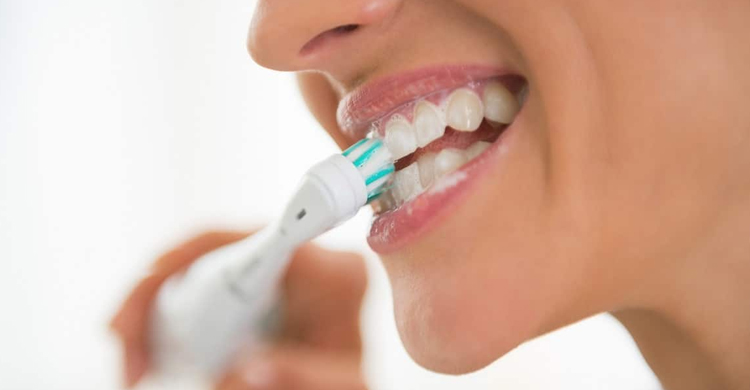
Blog Posts
RECENT BLOG POST


04 Aug 2021


10 Aug 2021


10 Aug 2021


By Dr. Aastha Chandra

24 Apr 2023
TIPS FOR CHOOSING THE BEST TOOTHPASTE
Many dental care, and oral health care products come down to preferences or individual needs. A dental care regimen that works for one person may not be right for another which includes even the choice of the appropriate toothpaste.
Here are some points you can keep in mind when you’re buying a toothpaste:
1. READ THE TOOTHPASTE LABEL CORRECTLY
We always advise our patients to read the fine print of the label on the back of a tube of toothpaste and not just the marketing on the front. It’s important that you have the right information and are aware about the contents, direction of use, manufacturing and expiry date, etc.
2. BUY A TRUSTED TOOTHPASTE BRAND
Well known toothpaste manufacturers, must submit an FDA approval and other government and industry quality control and compliance measures. This often means they will be responsive to consumer pressures.
Meanwhile, online hawkers of “natural” toothpastes may not be held responsible for health standards and may not take responsibility for any potential health damages to buyers.
3. WHITENING TOOTHPASTE IS NOT FOR EVERYONE
The whitening toothpaste on the grocery store shelves only provides a limited dental whitening, usually no more than one shade with persistent use.
In comparison, a professional whitening procedure done in a clinical setting with medical-grade ingredients can provide as from much as 8 to 10 shades whiter teeth. That’s a big difference. The vast majority of toothpaste formulated for teeth whitening rely entirely on polishing agents or abrasives to physically remove extrinsic stains and do nothing to eliminate or reduce natural yellowing and staining.
In fact, over abrasive whitening toothpaste may actually damage or degrade your enamel and won’t work at all for people with sensitive teeth. Unless you require only slight whitening and have realistic expectations of the kind of aesthetic improvement that can be achieved, whitening toothpastes
should be avoided.
4. CHOOSE A TOOTHPASTE WITH FLUORIDE
Besides reading each product’s label carefully, opting for fluoridated toothpaste is a must.
Fluoride has been an essential ingredient in all toothpaste for several reasons. Fluoride plays a crucial role in promoting dental health by facilitating the remineralisation of teeth. While buying for your children, please make a note of the age appropriate fluoride quantity.
Herbal toothpastes usually do not contain Fluoride and can be avoided.
5. LOOK FOR REMINERALISERS
Fluoride isn’t the only ingredient that remineralizes teeth. Two other positive minerals to keep an eye out for are Calcium and Phosphate.
Specifically, you want to look in the ingredient list for “Calcium Phosphate.” This mineral duo, along with Fluoride provides the essential building blocks for healthy enamel. When Calcium, Phosphate, and Fluoride are dissolved in your saliva, they form a potent healing brew.
6. AVOID TOOTHPASTE WITH TRICLOSAN
Triclosan is a common ingredient found in many kinds of toothpaste and is often included as an antimicrobial ingredient. Its inclusion in toothpaste is controversial, even amongst dentists and dental professionals. Needless to say, the mild upside of eliminating a few extra bacteria simply can’t
be justified when juxtaposed with its many potentially harmful side effects.
One of the main arguments against triclosan in toothpaste is it’s documented deleterious effects on hormones in animals and potential effects on human hormone health. Generally speaking, a person’s hormones are nothing to mess with lightly.
Triclosan may also have damaging effects on a person’s oral ecology. According to researchers, not all bacteria in the mouth are bad bacteria. There are some bacteria that play a crucial role in actively promoting oral health. The destruction of these pro biotic bacteria results in a compromised oral defence system.
7. CHOOSE PARABEN FREE TOOTHPASTES
Recent studies suggest that parabens, a common antibacterial preservative found in nearly 85 percent of all personal care products, including toothpaste, may be linked to everything from dermatitis in children to breast cancer in women.
8. LOOK FOR IDA ACCEPTED SYMBOL
The IDA (Indian Dental Association) is one of the leading industry groups for dentists. Look for this seal of acceptance to ensure standardisation. It also ensures safety and quality of the product.
9. RESEARCH RDA (Relative Dentin abrasion) LEVELS
Many consumers are not aware of the concept of RDA (Relative Dentin Abrasion) levels.
In essence, RDA levels measure a products abrasiveness. It is measured on a scale from 0 to 250 where 0 is a product that is completely non-abrasive and 250 is a toothpaste that is harmfully abrasive for most people.
To put these numbers in context, it is helpful to remember that a 4 on the scale is plain water on a toothbrush. It is essentially abrasion-free. Meanwhile, rated between 151 to 250 is considered by the Indian Dental Association (IDA) to be regarded as the harmful limit.
Patients with thin enamel or sensitive teeth will want something less abrasive, perhaps between 4 and 70 on the RDA scale.
10. CHOOSE NO ARTIFICIAL COLORS
While rainbow-colored toothpaste may be great fun, particularly for the children, they don’t contain natural ingredients. If your goal is to clean or even whiten your teeth, brushing your teeth with artificial food dyes isnt the ideal way.
See, that’s not so hard!
Taking the right steps to find the right toothpaste for you can improve your oral health, encourage you to smile, and ultimately, help you feel better about yourself.

